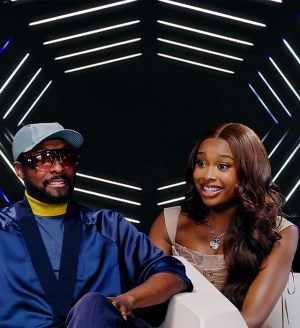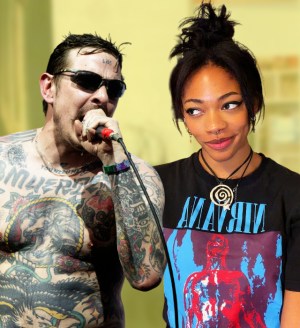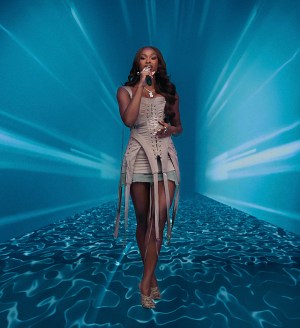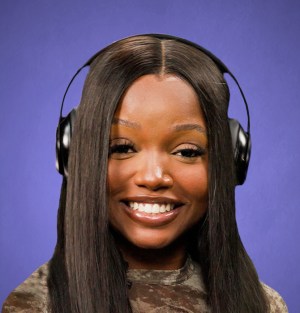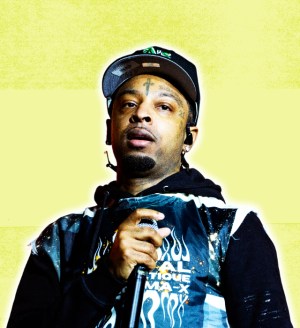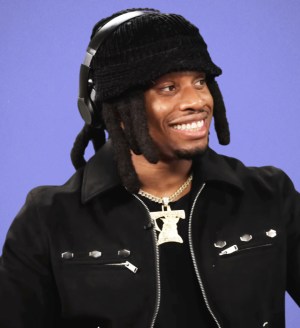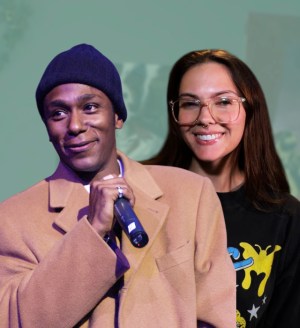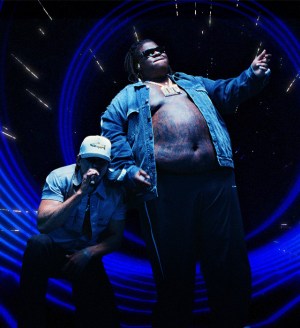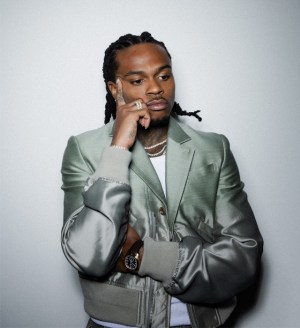Music + Culture
SHOWS
Covers Books
EVENTS
FEATURED
BRANDS
TRAVEL,
DRINKS & EATS
DRINKS & EATS
Latest
Ethel Cain Unexpectedly Drops Some ‘Willoughby Tucker, I’ll Always Love You’ Demos On Soundcloud
Ethel Cain had a great year with the release of her latest album, Willoughby Tucker, I'll Always Love You. Before ringing in 2026, she decided to give fans one more gift this year: a handful of demos from the making of the project, which she shared on Soundcloud yesterday (December 29). Announcing the tracks on Instagram, Cain wrote, "uploaded some demos from willoughby tucker onto my soundcloud. thank u all for the love on perverts and my little blood stained blonde this year. until whatever's next.... goodnight." The individual song uploads on Soundcloud come with brief notes. Cain writes of…
The Most Overlooked Indie Albums Of 2025
Tough as it is to define "emo" in 2025, "overlooked" feels like a much bigger challenge. First off, "overlooked" to whom? On the one hand, the music critic community is more expansive than ever and no matter how seemingly obscure a genre or geographical region felt even two years ago, it's probably being covered somewhere in depth and detail. If you know where to look, that is. On the other hand, that same fractionation somehow amplifies the consensus by the time year-end lists start to publish (at this rate, by mid-November in 2026). As everyone tends to their niche, a…
Cardi B Will Spend January Rehearsing ’10 To 12 Hours A Day’ For Her Long-Awaited 2026 Tour
A couple weeks ago, Cardi B shared that's she's been on the treadmill preparing for her upcoming tour, which launches in February 2026. Now she has revealed just what her workload will look like in the coming weeks. In a video shared today (December 29), Cardi starts with a message for some of her more combative followers, who she says have "been dragging me for three or four days." She notes, "Y'all been a little bit too mean," before continuing: "2026 is in a couple of days. I have so much work to do once January starts that is stressing…
Uproxx’s Baylee Lefton Highlights Amazing Guitar Moments With Her Latest Playlist
Keeping up with music news and resources like Spotify's giant and regularly updated New Music Friday playlist are great ways to keep your listening habits from getting stale. Sometimes, though, you need a deeper dive. That's where Uproxx's Baylee Lefton comes in as she routinely offers quick-hit lists of songs you need to add into your rotation this week. She just delivered a fresh mix and it features tracks that have amazing guitar moments. https://www.instagram.com/p/DSvZJS0EiUg/ The set kicks off with a live rendition of Gary Clark Jr.'s "Our Love," of which Baylee notes, "I saw Gary Clark Jr. in concert…
Selena Gomez, Benny Blanco, And Taylor Swift Had Some Of 2025’s Most-Liked Instagram Posts
2025 was full of huge music stories: the Oasis reunion, AI music, Kendrick Lamar's Super Bowl Halftime Show, and so on. As far as what was popping off on social media, that falls more in the pop sphere. Per data collected on Wikipedia and accurate as of December 24, the most-like Instagram post from an American musician shared in 2025 comes from Taylor Swift, as her and Travis Kelce's engagement announcement has over 37.6 million likes. Also on the list are photos from Selena Gomez and Benny Blanco's wedding, which garnered 24.6 million likes. The year's most-liked post overall comes…
Uproxx’s Joypocalypse Declares Viagra Boys Are Post-Punk At Its Most Fun
When hearing their band name, it's immediately clear that Viagra Boys are here to have a good time. They offered further evidence of that earlier this year with the title of their 2025 album, the more email-spam-filter-friendly Viagr Aboys. Silliness aside, though, Viagra Boys are also just pumping out the jams in a strong way, delivering a handful of well-received albums since their 2018 debut Street Worms. As Uproxx's Joypocalypse puts it in a new video, post-punk can be fun and humorous, and Viagra Boys do a great job at demonstrating this by not taking themselves too seriously. https://www.instagram.com/p/DSvcj6AEit8/ She…
The Best Emo Albums Of 2025
This year's Best Friends Forever festival featured a reunited Texas Is The Reason and Knapsack, Burning Airlines, Rival Schools, Jawbreaker, Mineral's final show, and a Jimmy Eat World headlining set that featured as many songs from Static Prevails as Bleed American; Even then, "Sweetness" and "The Middle" were tacked on last as a veritable encore, existing outside of the spirit of the preceding weekend where Jim Adkins reminisced about his days of dragging bass cabs up staircases and having slept on floors with everyone on the lineup over the age of 40. And yet, while I left Las Vegas inevitably…
Sabrina Carpenter’s Holiday Gift Is The Streaming Release Of ‘Such A Funny Way’
Sabrina Carpenter superfans are already aware of "Such A Funny Way." This summer, she released the song as a vinyl-only bonus track on Man's Best Friend. In September, she briefly made the track available for digital download, writing at the time, "'Such a Funny Way' is a song i am so proud of. the sentiment is one i always thought could really be the end of Man’s Best Friend in another universe!" Now, she has decided to re-purpose the song as a holiday gift for her fans: On Christmas Eve (December 24), she finally made the song available on streaming…
The Best Movies Of 2025
Presents, food, friends, and family are what this next stretch of the calendar is all about. But for those hours in-between having to go out and turn on, the best films from 2025 are here for you, most of them available to stream, but a few calling you to the theater for buttery popcorn and the less damaging kind of holiday season drama. While you may have seen a lot of these films throughout the year, we tip our cap if you've seen everything here. If you haven't, though, consider this one last holiday season to-do list. Encapsulating an on-screen…
Fred Again.. Creates A Banger In 13 Minutes And Discusses Productivity In Instagram’s Latest ‘Ask It Anyway’ Video
Few people have been as busy as Fred Again.. lately. In September, he started a rollout of new songs for his ever-evolving USB project, releasing fresh tracks and delivering high-energy live shows on a weekly basis. Even when the initial run finished, Fred went ahead and announced another one, set for early 2026. Even amid all that, he still found an hour to sit down with Instagram for a recent episode of their new long-form interview series "Ask It Anyway." It launched with Tyler, The Creator earlier this year and now Fred is the second-ever guest. In a chat hosted…
Hotels We Love: Caribbean Cool, Champagne Views, And Endless Turquoise at Grace Bay Club
Turks and Caicos is the #1 private destination in the Caribbean, which says a lot about the destination and the luxury you can experience there. The Turks and Caicos Islands have set aside dozens of protected areas including National Parks, nature reserves, sanctuaries and various historical sites, making it one of the most unique vacation spots in all of the Caribbean. If paradise had an address, it would be Grace Bay Club in Turks and Caicos. This oceanfront escape is where barefoot luxury meets impeccable service, with powder-soft sand and water so clear it feels unreal. From chilled welcome cocktails…
ASAP Rocky Wants To ‘Make Being A Dad Cool Again,’ Tim Burton Says
It has been a long, long, long road to ASAP Rocky's upcoming album Don't Be Dumb. In 2022, he said the project was finished. In July 2023, he indicated it'd be out soon. It was later given a summer 2024 release date before getting pushed back to the fall. Towards the end of 2024, it was given an approximate release window of early 2025. That brings us to late 2025 and the album is still not out yet. Finally, though, it appears it'll be here soon. Last week, Rocky took to Instagram to reveal the cover art, created by Tim…
SNX: This Week’s Best Sneakers, Featuring The Jordan 8 “Bugs Bunny,” What The? Book 1 & More!
Welcome to SNX DLX, your weekly roundup of the best sneakers to hit the internet. It looks like this sneaker year just doesn’t want to quit. Not only is this a pretty strong week, next week is even better, which leads us to wonder — where the hell was this energy during the summer? Why did the big brands decide to wait until the last few weeks of the year to bring the heat? Don’t they know we’ve already spent all our holiday money? We have so many questions! By now we have to assume your holiday shopping is done,…
Uproxx’s Joypocalypse Breaks Down Why Minor Threat’s Directness Made Them DIY Hardcore Heroes
Minor Threat were active for a mere three years in the 1980s, and yet, in that short window, they had an indelible influence on hardcore music. The band's Out Of Step and self-titled EPs are considered landmark works in the genre, and the group's song "Straight Edge" was even part of the inspiration for the "straight edge" movement that promotes refraining from drugs, alcohol, and other vices. As Uproxx's Joypocalypse explains in a new video, the band also set the foundation for the DIY aspects of the hardcare genre. https://www.instagram.com/p/DSa2Ac1knbR/ She says: "Hardcore through the lens of Minor Threat: fast,…
Kali Uchis Responds To High Demand By Releasing ‘Muévelo,’ A Leak That Became A Fan Favorite
With just days left until Christmas, we're officially in the annual dry season of new music releases. For the most part, artists are taking the last few weeks of the year off, laying low and relaxing. Kali Uchis had one more thing to say before bidding farewell to 2025, though, as today (December 19), she shared "Muévelo." The song is actually a fan favorite. It stems from the Orquídeas era and fans first heard it as a leak, but recently, there have been calls on social media for Uchis to officially share the full track. Uchis listened and here we…
SZA And Kendrick Lamar Had A Surprise Reunion At TDE’s Christmas Concert
Kendrick Lamar and SZA spent a lot of time together this year on the Grand National Tour, with SZA co-headlining the North American and European shows, while Kendrick then handled a handful of South American and Australian concerts himself. The two just couldn't end the year without getting together one more time, though. Top Dawg Entertainment hosted the 12th Annual Christmas Concert in Los Angeles last night (December 18), and while Kendrick is no longer with TDE, he still has love for his former label: He made a surprise appearance at the event. At one point, he joined SZA on…
Indiecast Hands Out The Yearly Indiecasties Awards
Steven and Ian begin with a quick Sportscast about the disastrous turn for Steven's beloved Green Bay Packers. They also do some clarifications on last week's year-end albums lists. After that, they discuss the future of the show and reveal that there won't be any new episodes for the foreseeable future. Finally, they commence with the annual awarding of the Indiecasties. Listen to Episode 270 here and subscribe wherever you get your podcasts. You can submit questions for Steve and Ian at indiecastmailbag@gmail.com, and make sure to follow us on Instagram and X (formerly Twitter) for all the latest news.…
Shaboozey, Ludacris, And Cortis Are Headlining A Series Of 2026 NBA All-Star Weekend Concerts
It might seem a little early to start thinking about the NBA All-Star game, but actually, voting just opened on December 17. While we wait to see which players will be participating in 2026, the NBA is already starting to reveal what All-Star Weekend is going to look like. Today (December 18), the league announced that Shaboozey, Ludacris, and Cortis will headline the league’s NBA Crossover concert series. The shows are going down at the Los Angeles Convention Center from February 12 to 14. Cortis said in a statement, "It’s a huge moment for us to be the first K-pop…
The Best TV Shows Of 2025
Best-of lists are inherently relative -- we all have our tastes, and we’re sticking to them -- but 2025’s TV felt unusually communal. We were all watching The White Lotus and altering our pronounciation of the word "Lorazepam" just a few months ago, piecing together the mind-bending mysteries of Severance, and desperately googling medical terms to keep up with the relentless life-saving measures of The Pitt. Even as the year kept throwing us curveballs, these shows created a kind of shared experience, a fleeting sense that maybe we were all in this bizarre, screen-addled world together. (It's funny how simply…
Our Splurge Gift Guide Will Round Out Your Seasonal Shopping
You got the gifts for the home, you got the style gifts, but you've waited until eight days before Christmas to figure out your “big swing” gifts, which means you’re either a procrastinator, an optimist, or both. Luckily, the splurge tier is forgiving: these are presents that don’t just show up under the tree, they become a highlight of someone’s whole year — with new toys, new creative tools, or full-on “I might change my life” experiences. Think of this list as the opposite of a panic buy. These are the gifts you’ll still be talking about next December. Brilliant…
‘Girls Like Girls’: Everything To Know About Hayley Kiyoko’s Song-Turned-Book-Turned-Movie
It's been a long journey for "Girls Like Girls." First there was the Hayley Kiyoko song in 2015, then a viral music video. Then, Kiyoko wrote a 2023 novel with the same title. Now, that book has been adapted into a movie. Focus Features picked up the worldwide rights to the film and now it's on its way. Kiyoko co-wrote the movie alongside Stefanie Scott, which is a full-circle moment as Scott starred in the original music video. Ahead of the movie's release, keep reading for everything you need to know before it hits theaters. Plot An official logline reads,…
Young Thug And Mariah The Scientist Are Engaged After A Grand On-Stage Proposal In Atlanta
Young Thug and Mariah The Scientist have been together for a while, and now some congratulations are in order, as the couple just got engaged. Thug decided to go very, very public with his proposal. It went down last night (December 16), on stage during Thug's Hometown Hero benefit concert at Atlanta's State Farm Arena. As fan-shot footage like this and this shows, the big screen on stage read "will you marry me?" as Thug was down on one knee. The two hugged and Thug gave Mariah a ring, then she told the cheering audience, "Guess I'm getting married!" Thug…












